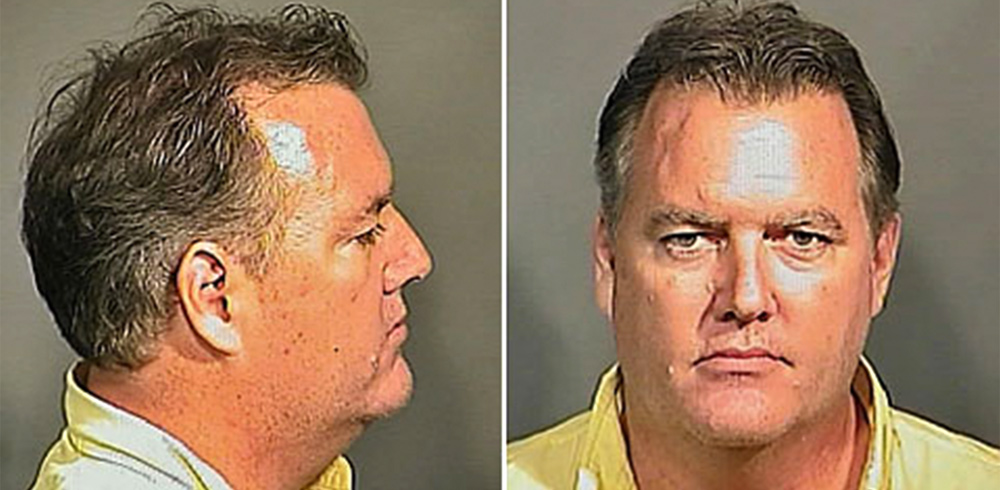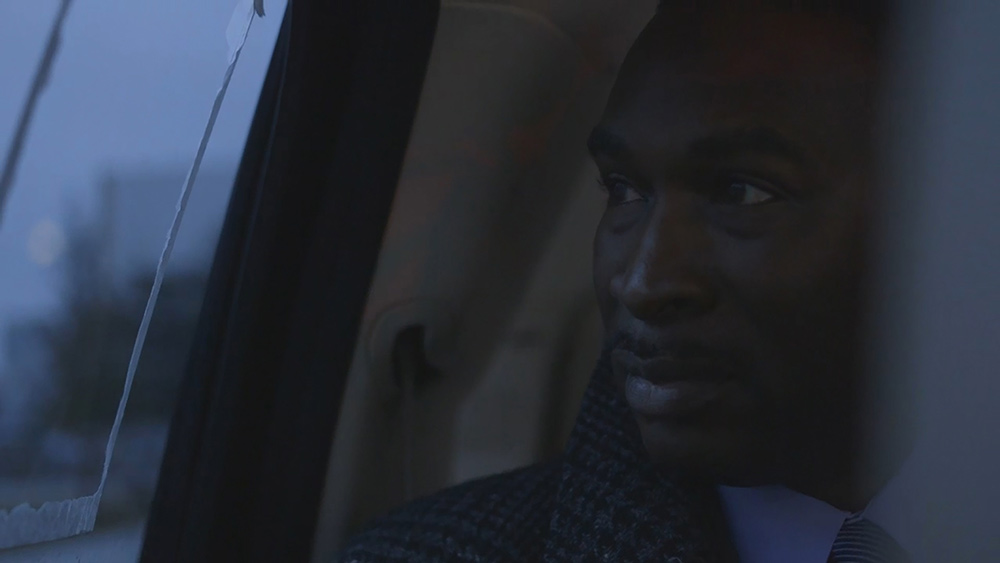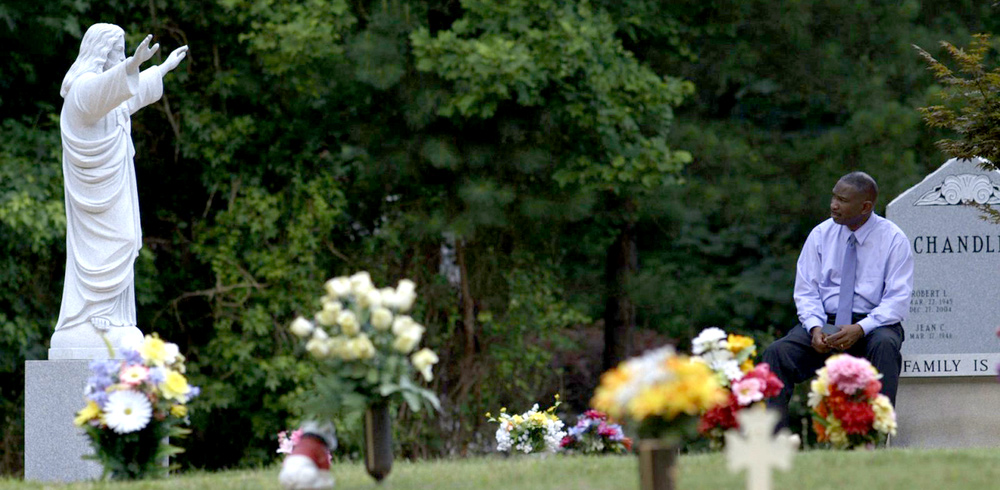
3 1/2 Minutes, Ten Bullets, which documents the 2012 murder of an unarmed African-American teenager at the hands of a middle-aged white man at a Jacksonville gas station, is a tightly crafted courtroom drama that deals with the idea of storytelling as much as it does with the idea of race. In fact, the issue of race was not mentioned in the trial because the murder was not being considered as a hate crime. The narrative in the courtroom was that the accused, Michael Dunn, was acting in self-defense because he thought he saw a gun. This was a story that his counsel presented, to great effect. But this narrative was also playing out on the world stage; the documentary is a story about how this case represented vastly more than the sum of its parts.
The idea of competing narratives exists both within the courtroom and outside of it. Directed by Marc Silver, who hails from the UK, 3 1/2 Minutes, Ten Bullets is told from the point of view of victim Jordan Davis' family, but we are also privy to private conversations between Dunn and his fiancée, since they were recorded by the prison and these recordings were available for public use. The narrative in which they engage is fraught with complexity. The first call in the film announces to both the viewer and the couple that the call is being recorded. Dunn and his fiancée are initially guarded in their conversation, but they eventually betray a desire for intimacy, which makes for a powerfully humanizing effect. Since Dunn's family refused to cooperate with the filmmakers, their story can only be revealed through police footage, these tapes and the courtroom footage. We are left with a feeling of distance from Dunn, yet as the film unfolds, he reveals more and more of himself through both the tapes and the trial.
Jordan Davis' family, by contrast, gave the filmmakers a great deal of access to their lives and their story. As with Dunn, though, they are aware of the camera. Through their sadness and anger, they seem self-aware enough to understand how this will read and what that might mean. They are on a noble mission that has more to do with their son, and they carry themselves as such.
We talked to Marc Silver via email about some of these ideas.

In the first act I was both surprised and uncomfortable to feel as much empathy for Michael Dunn as I did. While some of that feeling shifted a bit in the second act, I still couldn't help but feel sad for both him and his fiancée by the end of the film. Can you talk about creating empathy for the "bad guy" of your film, as well as the cultural desire for clarity and how you dealt with that expectation?
From the very beginning—when I first read what happened to Jordan Davis and watched the CCTV footage of the police interviewing Michael Dunn for the first time—I was struck by how he was so nonchalant that he’d killed someone, how he was so convinced that he would not be charged with murder, and that the boys were "thugs"—and all this purely because of the way he perceived the world. I figured there would be many others who perceived the world in the same way, and rather than make Dunn a "bogeyman" from the outset, I wanted audiences to have the chance to see some of themselves in him, to see some of society in him, to see some of America in him, and therefore have some level of empathy for him. I knew that as Dunn’s character unravels as the film progresses, this empathy would turn to disgust, but I felt it was essential to see Dunn not simply as "one rotten apple," but rather as a symbol, a product of a systemic and pervasive racism that had shaped his way of seeing. Of course Dunn is the "bad guy" of the film, but what I thought would be interesting was for audiences to feel that the ingredients that make Dunn a bad guy are being fed to us daily and are shaping our way of seeing.
You had intimate access to Jordan Davis' family, so the film very much feels like it is their story. Clearly, though, you were concerned with balancing out that narrative. What was your process in doing that in a way that refocused some of the blame towards the media and society? And how did your status and perspective as a non-American impact your ability to both direct the film and gain the trust of the subjects?
I like to think that I would have made the film in exactly the same way if I were American. But in all likelihood, not being American gives me a greater sense of distance, a greater opportunity to see the whole story from more of a bird’s eye perspective, to see links that, perhaps if I were closer, wouldn’t be so clear. In terms of gaining trust from Jordan’s parents, I spent a week with them listening to what had happened to Jordan and hanging out at some of his favorite spots in Jacksonville and Atlanta. I also showed them a film I had previously made called Who Is Dayani Cristal?, about the deaths of migrants in the deserts of Arizona. Aesthetically, the two films are very different, but there are themes in both that are very similar. Both deal with the deaths of young men who were in many ways victims of a system that views "the other" in a dehumanizing way. Both films attempt to not only tell the story of their lives and deaths, but also act as a mirror for audiences, inviting them to reflect on what role and connection they have to the themes within the stories. The films are both really about power structures, identity and "the other," mourning and absence, and the empowerment of the families who have suffered such irreversible loss.

As your film is very much about how we experience the world in terms of stories, I want to discuss some of the broader ideas of the film. Filmmakers often look at the process and ask themselves, "What does the audience know that the characters don't?" and "What does the audience need to know, as well as what do they want to know?" How and where did these questions play a role in your process? I'm not just talking about issues related to the present narrative, but also to the overriding ones about race, media and social interaction. One of those main questions is probably, "What did Michael Dunn know about race, and where did he learn it?"
I wanted, as much as it was possible, to give the audience a similar journey as the jury had. In other words, I wanted information to reach the audience in a similar way as it reached the jury. So one strand of the film is the almost forensic examination of the three-and-a-half minutes. While filming the trial, I found it amazing that at times it simply felt that the attorney who told the best story would win. When the first verdict came in and a mistrial was announced because the jury could not reach a decision, it felt that because the defense attorney told a more convincing story, the jury was simply unable to see, and take responsibility for, defining what the truth was.
But we also needed the second strand—the evolution of Jordan’s family, and Michael Dunn and his fiancée, so that in parallel to the trial, the audience could come to understand the human cost of the three-and-a-half-minute interaction—especially as this is something the jury did not experience.
The richness of moments that these two strands provided, I think, allow the audience to then ask themselves deeper questions that go beyond the actual intricacies of the story and expose them to the bigger issues—the bigger story that is "What did Michael Dunn know about race, and where did he learn it?"
Many people hear the word "documentary" and think of "journalism." Talk about the connection between the two, and what role you think documentary plays in the world, versus that of journalism.
I feel very privileged to be able to make documentary films. I feel journalism allows me to have a solid foundation (i.e. the facts and figures are all correct!), but documentary allows me to share the way I specifically see the world. Everyone comes to "facts and figures" via their own trajectory, their own set of values and perspectives, and everyone interprets that information in a different way. I am just very lucky I get the chance to share how I interpret things! My experience of making documentaries has taught me that we need to be able to understand and empathize with other people in order to care; facts and figures alone do not do this. In a world where we are overwhelmed with information, emotive, aesthetically powerful long-form documentary is essential in retaining an informed electorate—and, in turn, a meaningful democracy.
3 1/2 Minutes, Ten Bullets opens in theaters June 19 through Participant Media.
Michael Galinsky is a musician, photographer, painter, writer and filmmaker.
